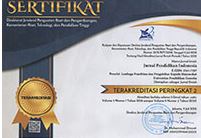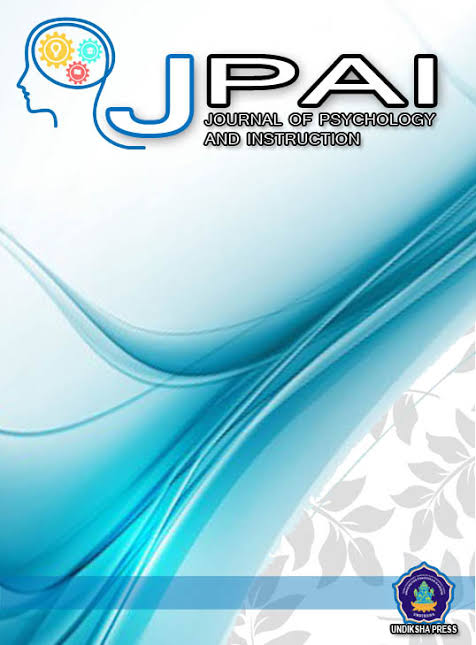Improving High School Adolescents Optimism Through a Best Possible Self Intervention
Keywords:
Intervention best possible self, high school students, optimismAbstract
Adolescents will inevitably face challenges and obstacles in their educational journey, so an optimistic mindset is essential for positive problem-solving. The "Best Possible Self" technique stands out as an effective strategy to foster optimism. This study aims to evaluate the effectiveness of applying the "Best Possible Self" method in increasing students' level of optimism. Using a True Experimental design with a control group, this study involved a pretest and posttest of 16 grade XI students at SMA Islam 3 Pakem, who were randomly selected. Data analysis used paired sample test and independent t-test. The results showed the success of the Best Possible Self intervention, which showed a substantial mean difference from the experimental group and for the control group there was no difference. In addition, significant differences between the experimental and control groups. The findings provide benefits for students and educators in adopting the Best Possible Self method as a tool to increase optimism and expand understanding in positive psychology.
References
Agustang, A., Mutiara, I. A., & Asrifan, A. (2021). Masalah Pendidikan Di Indonesia. Jurnal Pendidikan, 9(1), 1–19. https://meilanikasim.com/2009/03/08/masalah-pendidikan-di-indonesia/
Altintas, E., Karaca, Y., Moustafa, A., & El Haj, M. (2020). Effect of Best Possible Self Intervention on Situational Motivation and Commitment in Academic Context. Learning and Motivation, 69, 101599. https://doi.org/10.1016/j.lmot.2019.101599
Bloomfield, J., & Fisher, M. (2019). Quantitative research design. Journal of the Australasian Rehabilitation Nurses’ Association, 22(2), 27–30. https://doi.org/10.33235/jarna.22.2.27-30
Boselie, J. J. L. M., Vancleef, L. M. G., van Hooren, S., & Peters, M. L. (2023). The effectiveness and equivalence of different versions of a brief online Best Possible Self (BPS) manipulation to temporary increase optimism and affect. Journal of Behavior Therapy and Experimental Psychiatry, 79(101837), 1–6. https://doi.org/10.1016/j.jbtep.2023.101837
Carrillo, A., Rubio-Aparicio, M., Molinari, G., Enrique, Á., Sánchez-Meca, J., & Baños, R. M. (2019). Effects of the Best Possible Self intervention: A systematic review and meta-analysis. PLoS ONE, 14(9), 1–23. https://doi.org/10.1371/journal.pone.0222386
Coelho, G. L. H., Vilar, R., Hanel, P. H. P., Monteiro, R. P., Ribeiro, M. G. C., & Gouveia, V. V. (2018). Optimism scale: Evidence of psychometric validity in two countries and correlations with personality. Personality and Individual Differences, 134(June), 245–251. https://doi.org/10.1016/j.paid.2018.06.030
Deck, S., Semenchuk, B., Hall, C., Duncan, L., Kullman, S., & Strachan, S. (2023). How Best to Imagine: Comparing the Effectiveness of Physical Activity Imagery, Possible Self and Combined Interventions on Physical Activity and Related Outcomes. Imagination, Cognition and Personality, 42(3), 244–262. https://doi.org/10.1177/02762366221107883
Duan, S., Exter, M., & Newby, T. (2022). Effect of Best Possible Self Writing Activities on Preservice Teachers’ Attitudes towards Technology Integration. TechTrends, 66(4), 654–665. https://doi.org/10.1007/s11528-022-00696-y
Enrique, Á., Bretón-López, J., Molinari, G., Baños, R. M., & Botella, C. (2018). Efficacy of an adaptation of the Best Possible Self intervention implemented through positive technology: a randomized control trial. Applied Research in Quality of Life, 13(3), 671–689. https://doi.org/10.1007/s11482-017-9552-5
Hanssen, M. M., Peters, M. L., Vlaeyen, J. W. S., Meevissen, Y. M. C., & Vancleef, L. M. G. (2013). Optimism lowers pain: Evidence of the causal status and underlying mechanisms. Pain, 154(1), 53–58. https://doi.org/10.1016/j.pain.2012.08.006
Hardie, J. H., & Turney, K. (2022). Maternal depression and adolescent optimism. SSM - Population Health, 19(June), 101135. https://doi.org/10.1016/j.ssmph.2022.101135
Heekerens, J. B., & Eid, M. (2021). Inducing positive affect and positive future expectations using the best-possible-self intervention: A systematic review and meta-analysis. Journal of Positive Psychology, 16(3), 322–347. https://doi.org/10.1080/17439760.2020.1716052
Kim-Godwin, Y. (2020). Effectiveness of Best Possible Self and Gratitude Writing Intervention on Mental Health Among Parents of Troubled Children. Journal of Psychosocial Nursing and Mental Health Services, 58(9), 31–39. https://doi.org/10.3928/02793695-20200624-07
Lubis, I., Lessy, Z., & Sibyan, A. L. (2023). Remaja, Kekerasan, Dan Pendidikan Keluarga: Fenomena Klitih Di Yogyakarta. Jurnal Pendidikan, Kebudayaan Dan Keislaman, 2(1), 1–18. https://doi.org/10.24260/jpkk.v2i1.1316
McBeth, M., Blakeman, J., Kearsley, L., Tyler, A., & Villanueva, E. (2023). Teaching Generation Z Students About Politics: Optimism or Pessimism? International Journal for the Scholarship of Teaching and Learning, 17(1), 1–9. https://doi.org/10.20429/ijsotl.2023.17105
Meevissen, Y. M. C., Peters, M. L., & Alberts, H. J. E. M. (2011). Become more optimistic by imagining a best possible self: Effects of a two week intervention. Journal of Behavior Therapy and Experimental Psychiatry, 42(3), 371–378. https://doi.org/10.1016/j.jbtep.2011.02.012
Pál, L., & Sebestyén, N. (2023). Egy ikigai elemekkel bővített „legvágyottabb én” típusú online intervenció hatásvizsgálata. Magyar Pszichológiai Szemle, 78(2), 187–202. https://doi.org/10.1556/0016.2023.00026
Peters, M. L., Meevissen, Y. M. C., & Hanssen, M. M. (2013). Specificity of the Best Possible Self intervention for increasing optimism: Comparison with a gratitude intervention. Terapia Psicológica, 31(1), 93–100. https://doi.org/10.4067/s0718-48082013000100009
Ratnawati, V., Setyosari, P., Ramli, M., & Atmoko, A. (2021). Development of academic optimism model in learning for junior high school students. European Journal of Educational Research, 10(4), 1741–1753. https://doi.org/10.12973/EU-JER.10.4.1741
Rincón Uribe, F. A., Neira Espejo, C. A., & Pedroso, J. da S. (2022). The Role of Optimism in Adolescent Mental Health: A Systematic Review. In Journal of Happiness Studies (Vol. 23, Issue 2). Springer Netherlands. https://doi.org/10.1007/s10902-021-00425-x
Rohayati, N., Dimala, C. P., & Aisha, D. (2023). Peran Dukungan Sosial dan Optimisme Terhadap School Well-Being Pada Remaja. Psychophedia Jurnal Psikologi Universitas Buana Perjuangan Karawang, 8(1), 65–76. https://doi.org/https://doi.org/10.36805/psychopedia.v8i1.5545
Rossa, V. (2020). Akibat Pandemi, 40 Persen Pelajar Indonesia Kehilangan Motivasi Belajar. Diambil Kebali Dari Suara.Com: https://www.suara.com/health/2020/12/16/141248/akibat-pandemi-40-persen-pelajar-indonesia-kehilangan-motivasi-belajar
Schutte, N. S., & Malouff, J. M. (2023). Thinking about the best possible self: A unique individual difference characteristic. Current Psychology, 42(9), 7336–7346. https://doi.org/10.1007/s12144-021-02043-5
Seligman, M. E. P. (2006). Learned Optimism. New York: Vintage Books.
Setriawati, N. (2021). A Picture Of Optimism In The Final Students Who Compiled The Thesis During The Covid-19 Pandemic. Jurnal Pendidikan Tambusai, 5(3), 114494–114499. https://doi.org/https://doi.org/10.31004/jptam.v5i3.2760
United Nations Children’s Fund. (2022). Education and Adolescents: Helping children and adolescents reach their full potential. Diambil Kebali Dari United Nations Children’s Fund: https://www.unicef.org/indonesia/id/pendidikan-dan-remaja?gclid=CjwKCAjwmbqoBhAgEiwACIjzEFIQvbclS_8aKupjzAlTdveTNtUjf4W-RX3OCwWQj7JSYu8WerZeHRoC0D0QAvD_BwE
Wahyuni, S., Khumas, A., & Bakar, R. M. (2022). Best Possible-Self untuk Meningkatkan Optimisme pada Mahasiswa yang Mengerjakan Skripsi. Jurnal Psikologi Talenta Mahasiswa, 1(3), 103–119. https://ojs.unm.ac.id/jtm/article/view/103-119
Widopuspito, A., & Sutarman, S. (2023). Penanggulangan Tindakan Perundungan Peserta Didik Dalam Perspektif Islam Di SMA Muhammadiyah 1 Yogyakarta. Al-Manar, 12(1), 38–46. https://doi.org/10.36668/jal.v12i1.381










